By María-Rocío Meini, Ignacio Cabezudo, Laura L. Ricardi, Cecilia S. Galetto, Carlos E. Boschetti and Diana Romanini
Waste and Biomass Valorization (2019)
DOI: 10.1007/s12649-019-00844-1
Food Chemistry (2019) 283 257-264
DOI: 10.1016/j.foodchem.2019.01.037
The vitiviniculture activity produces millions of tons of organic wastes with their associated cost of disposal and environmental consequences (Fontana et al., 2013). Argentina is one of the ten major producers of wine worldwide. While most of the production arises from Mendoza and San Juan provinces (in the Cuyo Region), other provinces also have an interesting production, including San Luis, La Rioja, Córdoba, Tucumán, and Salta (Figure 1). Entre Rios was the fourth province producing wine in 1910 in the country, but an unfortunate law in 1934 that restricted the activity to the Cuyo region destroyed the activity in the rest of country. Only recently the activity was restored in Entre Rios, and there is a growing interest of the consumers for the diversification of wine production.
Our research group is based at the “Instituto de Procesos Biotecnológicos y Químicos”, in Rosario, Santa Fe. Entre Rios is our neighbour province, being only separated by the Parana River. A young wine cellar called BordeRío Bodegas & Viñedos in Victoria, Entre Ríos was our first contact with the vitiniculture activity of our region. They intended to revalorize the wastes generated after fermentation in red wine production, which consists on grape seed, skin and pulp; commonly known as grape pomace.

It is well known that grapes have a considerable content of polyphenols, which are responsible of the colour and aroma of wine, and also of its health associated beneficial effects. Though polyphenols are extracted during maceration and fermentation, a great proportion still remains trapped in grape pomace. We first studied the application of organic solvent: aqueous mixtures for the extraction of polyphenols, and the application of alkaline hydrolysis, intended to liberate the fraction known as bound phenolics, as part of Ignacio Cabezudo´s PhD Thesis supervised by Professor Diana Romanini (unpublished results). By that time, a prominent cellar from Mendoza, “Bodegas Salentein” also showed interest in our projects and provided us with grape pomace of several varieties.
Prof. Diana Romanini has her main line of investigation in fungi culture production for the isolation of enzymes and metabolites, and therefore intended to merge in the wine system the biorrefinery concept. That is the sustainable processing of biomass into a spectrum of bio-based products (food, feed, chemicals, materials) and bioenergy (biofuels, power and/or heat) (Jong et al., 2011).
María Rocío Meini had obtained her PhD in enzymes evolution, and during her posdoc supervised by Diana Romanini, her project focused in the application of industrial enzymes for improving extraction of polyphenols from grape pomace. By looking at the literature, we found that cellulase, pectinase and tannase were employed, but with excessive enzymes doses, arbitrary temperature and long incubation times. We therefore performed an experimental design to test first which variables were relevant for the extraction and after that an optimization of the process was performed by surface response methodology. We employed grape pomace varieties from Entre Rios and Mendoza, including Syrah, Marselan, Cabernet Sauvignon, Malbec and Pinot Noir. All of the varieties allowed the production of extracts with a rich content in polyphenols and antioxidant activities. That content was always higher in the extracts prepared using the enzymatic optimized treatment than in the control extracts (Figure 2)(M. R. Meini et al., 2019).
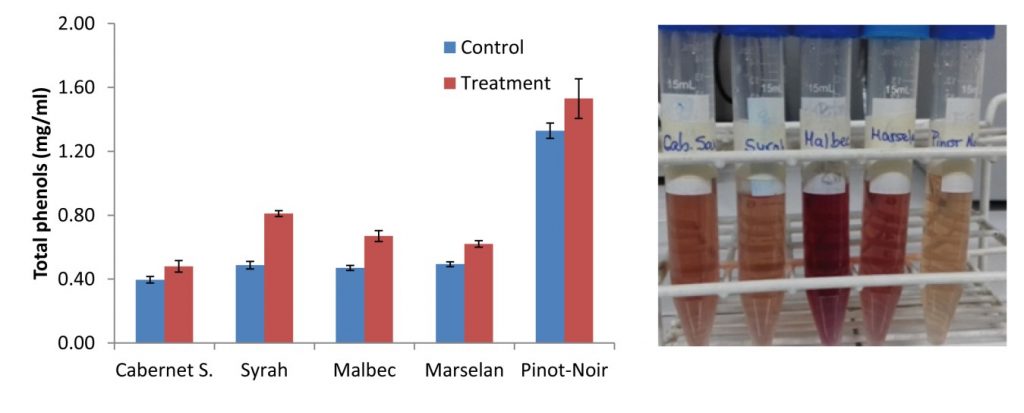
At the same time, a biorrefinery approach was applied to grape pomace, by testing its use as substrate for the fungus Aspergillus niger in submerged cultures (M. R. Meini et al., 2019). We proposed to induce the enzymes that assist to degrade the grape pomace matrix to liberate the polyphenols. Though in this study we found that grape pomace could not induce by itself the tannase production, we found it was a good complement to be employed with tannic acid, the typical inductor of tannase. Also, the production of other enzymes, such as cellulase, pectinase and α-amylase was detected. The induction of tannase in the culture produces a significant liberation of gallic acid from the grape pomace. Therefore, in this proposed biorrefinery, tannase enzyme and gallic acid can be obtained with a quantitative yield employing grape pomace as the raw material (Figure 3).
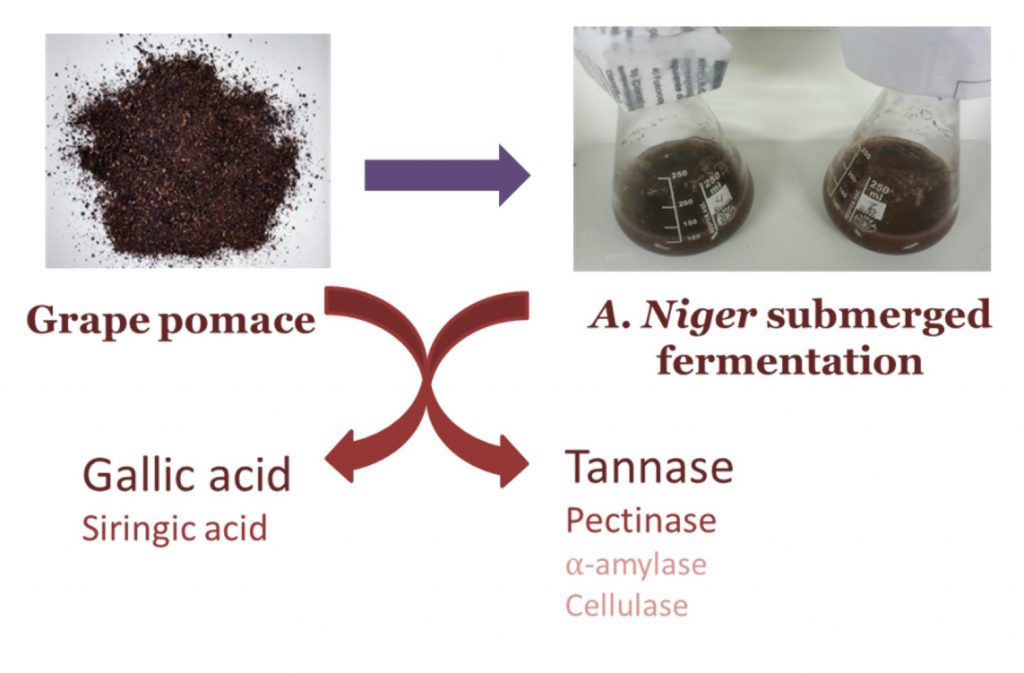
Acknowledgments: This work was supported by grants from Agencia Nacional de Promoción Científica y Tecnológica, Argentina (PICT-2016-4463 and PICT-2016-1170), Consejo Nacional de Investigaciones Científicas y Técnicas, Argentina (PIP 505/2015 and PUE BD20160041CO); and Secretaría de Políticas Universitarias, Ministerio de Educación y Deporte, Proyecto VT12-UNR4775 (2017), Argentina.
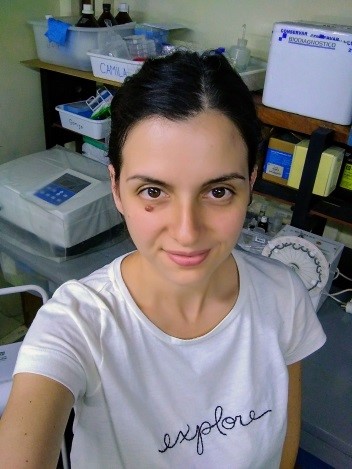
María Rocio Meini 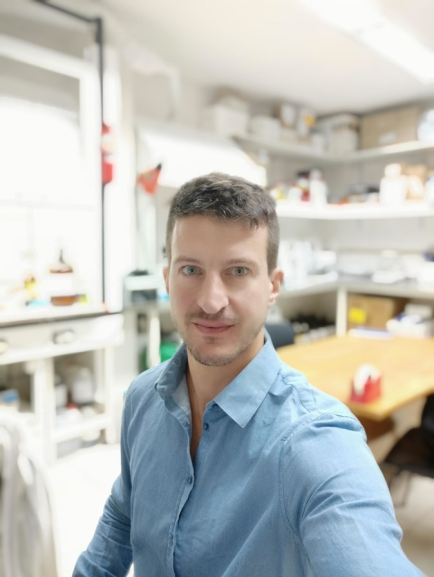
Ignacio Cabezudo 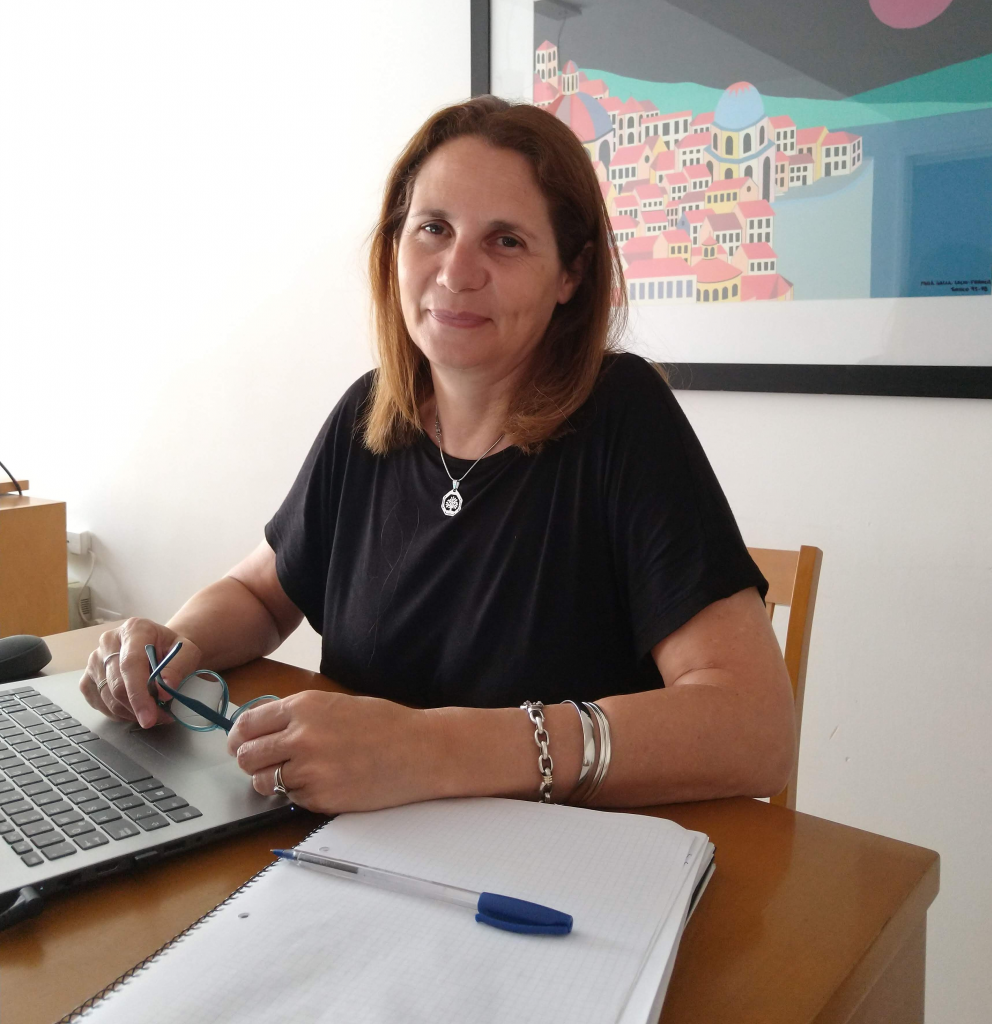
Diana Romanini
María Rocio Meini
Mail: mmeini@fbioyf.unr.edu.ar
Scopus Id: 55255721300
Researcher at the Instituto de Procesos Biotecnológicos y Químicos (IPROBYQ) – CONICET, Universidad Nacional de Rosario and teaching assistant at Biophysics, FBioyF, UNR. She obtained her PhD in Biological Sciences in the Instituto de Biología Molecular y Celular de Rosario (IBR) working on antibiotic resistance and protein evolution. She is currently working with Diana Romanini in the Bioprocess Laboratory of IPROBYQ in the development of bioprocess aimed to valorize agroindustrial wastes, including enzymatic production (tannase, cellulase, pectinase and α-amylase enzymes) and applications, and recovery of polyphenols. She has co-authored 7 regular scientific papers, some of them of very high impact and 20 contributions in scientific symposiums. H-index=6 (Scopus)
Ignacio Cabezudo
Scopus Id: 55521040800
Mail: icabezudo@fbioyf.unr.edu.ar
He obtained his PhD in Chemistry at the Instituto de Procesos Biotecnológicos y Químicos – CONICET, Universidad Nacional de Rosario, studying the obtainment of phenolic antioxidants from agro-industrial wastes. He originated extraction optimisations of natural antioxidants from grape pomace and soybean hull through environmentally friendly processes and studied the chemical composition of the optimized extracts. In collaboration with M.R. Meini and D. Romanini, his current work encompasses the use of tools like thin layer bioautography to shorten the path to novel bioactive molecules in the extracts produced through bio refineries using residues as source of carbon. Nowadays finishing his Postdoc working with Dr Ricardo Furlan conducting effect directed analysis of complex mixtures prepared by dynamic combinatorial chemistry. He aims to find excessive skin pigmentation (tyrosinase) inhibitors, other biological targets of his work are enzymes that cause enzymatic browning of vegetables (polyphenol oxidases), and the PhoP/PhoQ two-component system, that regulates the virulence of Salmonella. He has co-authored 7 regular scientific papers and 15 contributions in scientific symposiums. H-index= 5 (Scopus).
Diana Romanini
Mail: romanini@iprobyq-conicet.gob.ar
Scopus Id: 8711068500
Researcher at the Instituto de Procesos Biotecnológicos y Químicos (IPROBYQ) – CONICET. She has 17 years’ experience in research and teaching in the areas of Fisico-chemical and Biotechnological Processes. She is currently the head of the Bioprocess Laboratory of the IPROBYQ. As a whole, her research follows a multidisciplinary approach working in the following main topics: 1- Biotechnological valorization of agro-industrial by-products to obtain high value bioactive fungal molecules (enzymes and pigments) and recovery of antioxidants; 2- the development of new food products and functional ingredients (probiotics and organic acids).She is author of 36 scientific papers, some of them of very high impact and more than 75 contributions in scientific symposiums. H-index=13 (Scopus).

